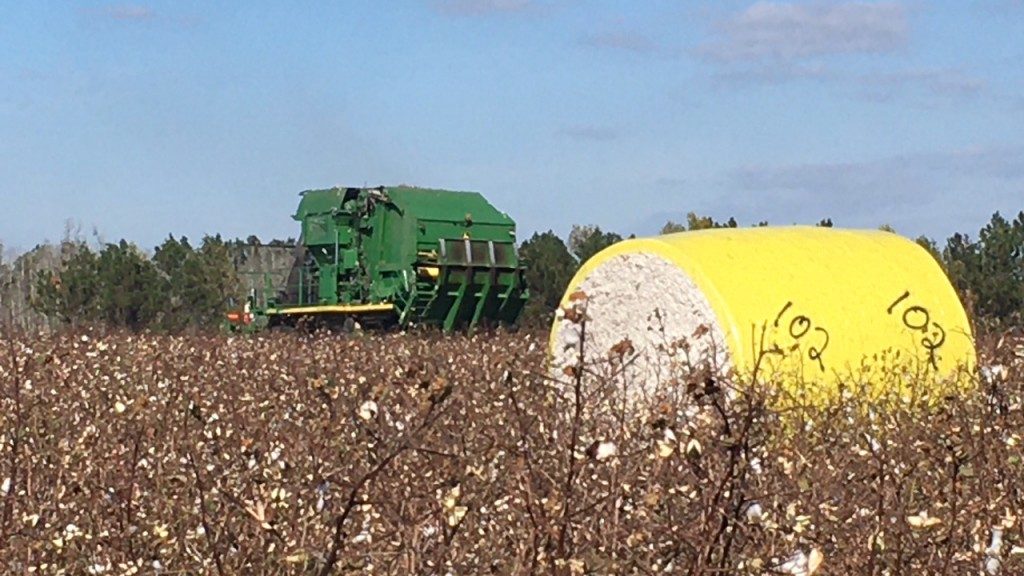
Peanut maturity checks will start this week. Growers can bring their peanuts to the Colquitt County office every Tuesday, Wednesday, and Thursday in September from 8:30 to 10 am. If you need peanut samples done on Mondays or Fridays, then call me.
Numerous samples have come in this week. Georgia 06G and TifNV has been running mid to upper 140’s to maturity.
Taking a good sample is CRUCIAL in determining the proper time to dig, so here is a reminder of how to pull a sample for profiling peanut maturity. A peanut hull scrape maturity check will be as accurate as the sample that you take. Pull or dig up at least 5 to 6 adjacent plants from at least three representative parts of a field which can be dug in on day. Keep these samples from each area of the field separate. Pick ALL the peanuts off the plants until you get around 200 peanuts (a sample should contain between 180 and 220 peanut pods). Pick the vine clean. If it will be a while before you can bring the sample then pick off the sample and keep the peanuts in a bucket of water to keep them fresh.
Please make a note about fields that were replanted because of stand issues. Some of these fields might have a split crop while in other fields might have a more typical layout on the board. Knowing which fields were replanted will just help you understand any inconsistencies observed on the maturity board.
What about irrigating peanuts? According to Dr. Porter, unlike with cotton and corn there is no physiological irrigation termination trigger for peanut. As the crop is reaching toward the end of the year the water requirements decrease per the irrigation schedule below. The biggest concern with end of season peanut irrigation is digging, too much moisture will cause excessive soil on the shell, too little moisture will make digging difficult.

I have seen an increase in late leaf spot in fields with tighter rotations. Dr. Bob says to consider protecting peanuts from leaf spot and white mold to within two to three weeks of anticipated digging dates. Well-rotated fields with little disease might go four weeks without a fungicide, but I would advise against it as our hurricane wildcards could delay harvest u unexpectedly. For peanuts I do not generally recommend digging early no matter the level of tomato spotted wilt. Growers should be preparing to dig peanuts that are more than 50% defoliated to leaf spot or damaged by white mold. Leaving peanuts in the ground can increase grade, but can also add to digging losses of our most mature peanuts when disease prevails.
Believe it or not. I got a non-jassid question. What is PHI? According to Dr. Bob, PHI stands for “pre-harvest interval” and is the legal limit where a fungicide (or any pesticide) can be applied to a crop. “Harvest Date” for corn, cotton, and soybeans is obvious. For peanuts I follow that “harvest date” is when they are picked and not when they are dug.
Dr. Monfort provided agents with information about peanut varieties last week.

I have been seeing a few three cornered alfalfa hoppers in peanuts. Dr. Abney reminds us that TCAH adults are highly mobile and can move in and out of fields very quickly. Though feeding may result in some minor yield loss, there are no cost effective insecticides that provide good efficacy and residual activity. This combined with the risk of flaring spider mites makes an insecticide application for TCAH very risky.
What about potato leaf hopper in peanuts? First, this is a different insect than the jassid. Dr. Abney mentioned the other day that potato leafhoppers (PLH) become abundant in some fields every year, but infestations in peanut in 2025 are the highest I have ever seen. With that said, growers are rightfully concerned. The question of what to do when PLH is present is not an easy one to answer. There are no recent data on the relationship between the injury caused by leafhopper feeding (hopper burn) and yield. Indications are that hopperburn does not have much impact on yield. That, coupled with the risk of flaring mites with insecticides, leads me to recommend that most growers avoid spraying potato leaf hopper.
